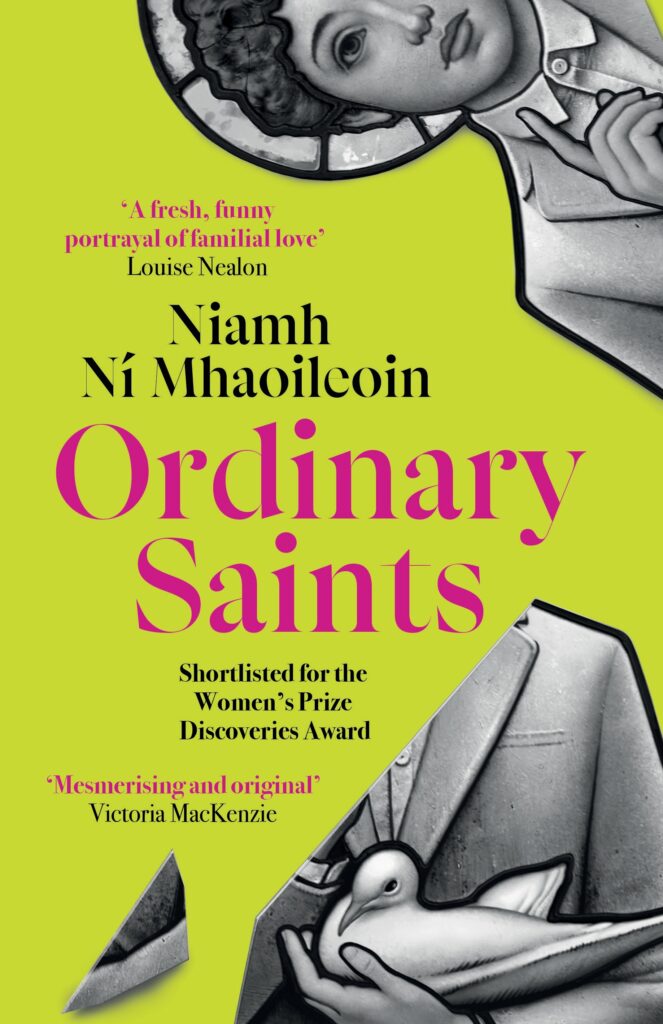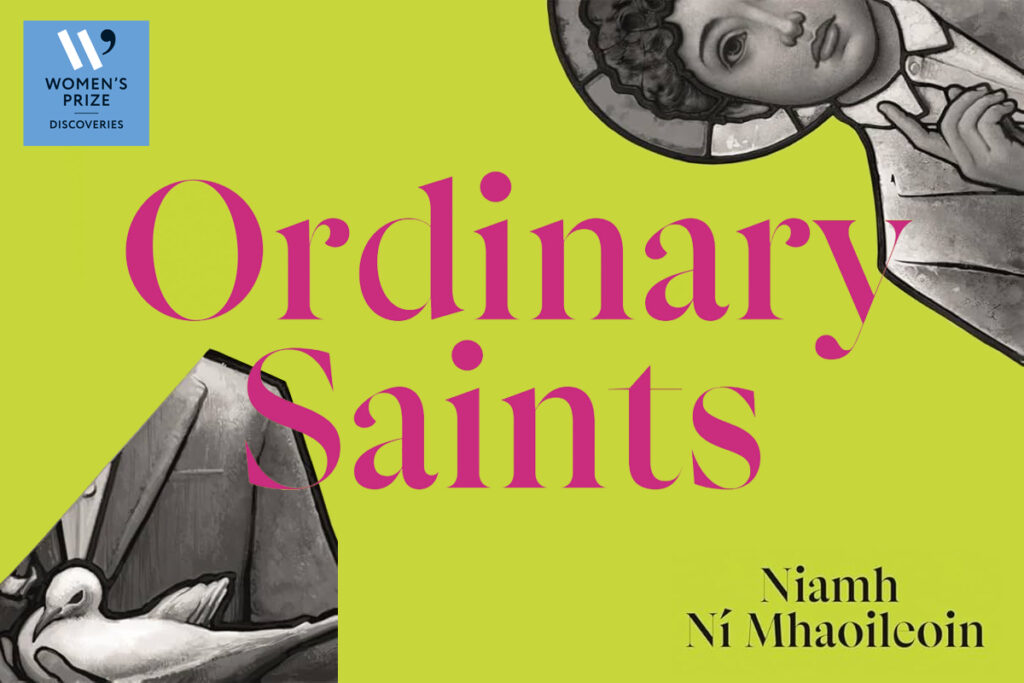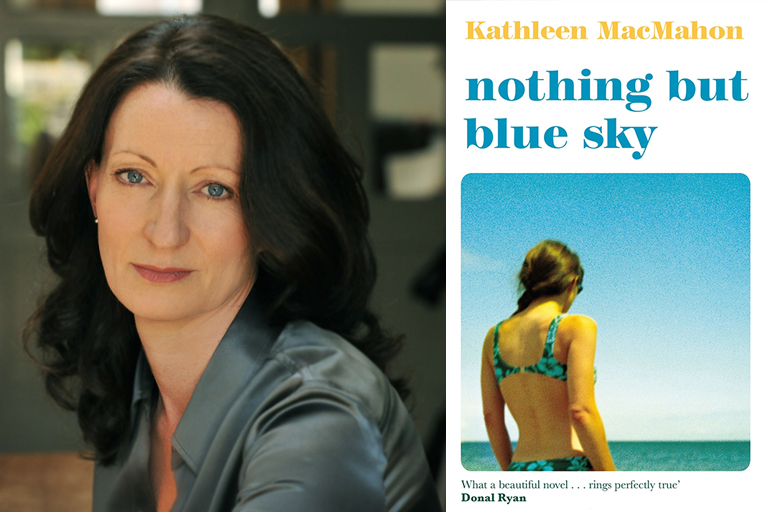As Niamh Ní Mhaoileoin – shortlisted for our Discoveries Award 2022 – reveals the cover of her debut novel, Ordinary Saints (24th April 2025), she shares with us the challenges of making sure it reflects the story. Read on for a behind-the-scenes look at the cover design process.
I’ve always told people that I don’t care that much about book covers – and I genuinely believed it. I’m not a particularly visual person, for one thing. I’m a huge Fitzcarraldo stan, for another, and think their plain blue covers are the height of sophistication. And I mostly buy books based on recommendations, anyway, rather than what catches my eye in the shop.
But then the time came to produce a cover for my own book and I realised, not for the first time in my life, that I was absolutely full of it.
The process started really well. My novel tells the story of Jay, a queer Irish woman who finds out that her dead brother, Ferdia, may become a Catholic saint. The initial cover concept – either or both characters rendered in vivid stained glass – perfectly captured one of the book’s key tensions, the collision of arcane religious traditions and contemporary queer life. The team created a first version, which looked great but needed a few tweaks. But when we made those tweaks, they didn’t quite work. We made some more. It got worse. The process was functioning exactly as it should and still, the story we were trying to tell seemed to be sliding out of perspective.
From conversations with other writers, particularly debuts, I know that covers are a common trigger for authorial meltdowns. It’s not surprising. Writing a book is hard. It’s lonely. For years, it’s just you in a room with an idea that no one else quite gets yet and that might just fail horribly.
Like with any hard thing, you get yourself through with a set of small fantasies. You picture yourself talking about the novel at a book event. You think about sharing it with the people you care about. And, probably above all else, you imagine holding the finished product in your hand. Your idea. Your words. An actual physical book. So, of course it’s difficult when it seems that the object itself isn’t going to look the way you hoped it would.
In my case, after a few weeks of back-and-forth, everyone was more or less in agreement. The initial concept wasn’t working and something needed to be done. But time wasn’t really on our side.
I tried to be stoic about all this, to stay upbeat. I reminded myself that I didn’t actually care about book covers anyway. But I was pretty deflated. I lowered my expectations, preparing myself for a final cover that I didn’t love.
Around this time, I turned to the legendary Discoveries 2022 WhatsApp group and asked their advice. These women have supported me through every step (and misstep) of my journey to publication, and this was no exception. They let me vent and validated my feelings, but then gently nudged me towards constructive steps forward.
Next I called my agent and we talked it through. She reassured me that this wasn’t the slow descent into catastrophe that I thought it was. These situations arise quite often, she explained, and typically get resolved.
A few days later I had a call with two of my editors. They were upfront about the challenges and prepared to go back to square one if that’s what it took. They listened again to my perspective on the fundamental story that the cover needed to tell. Most importantly, through their care and attention, they reminded me that they were in my corner and that everyone at the publishing house was invested in Ordinary Saints and wanted it to be the best it could be.
After that, things went quiet for a few weeks. It was nerve-wracking. I was still working hard to manage my expectations. And then, while I was on holiday in the French Alps, a WhatsApp message came through with an image of the new cover.

I stared at it, relief pumping through me. I didn’t hate it. At first, that was all I knew. I showed it to my sister and she loved it. I sent it to my friend – a fellow 2025 debut and Discoveries winner Emma Van Straaten – and she raved. I stared at it some more. It was probably a full hour before I knew for sure that all my expectation management had been for nothing. I genuinely loved it too.
What’s more, there had been an unexpected plot twist. In that Zoom call we had agreed to throw out the original illustration and switch to a text-led cover. But one of the design team had continued playing around with the image and he’d found a way to make it work. By literally smashing the stained glass window and putting it back on the cover in shards, he had created the perfect image for how my protagonist, Jay, feels about her brother’s cause for canonisation.
I’m thrilled to be revealing this cover and the journey it took to get here only makes me love it more. It’s the perfect reminder that the little story I began in lockdown, alone at my kitchen table, is now nurtured and supported by a whole community of brilliant and thoughtful people.
That’s been a greater gift and privilege than I could have imagined, and I can’t wait to share Ordinary Saints with readers next year.








